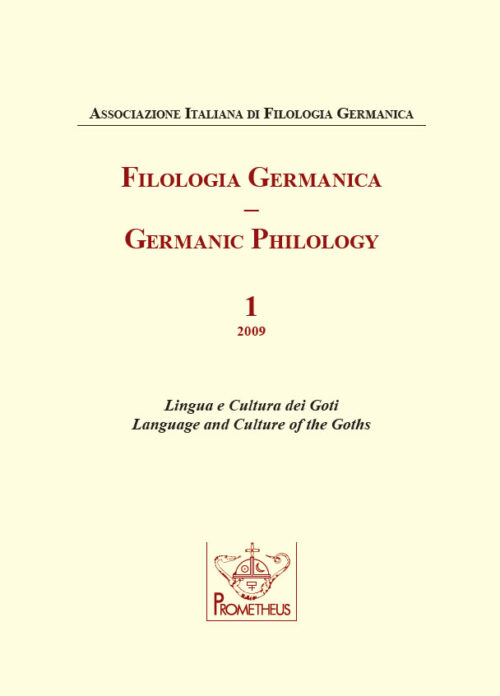Key words of the Gospel of John: the Gothic version
Abstract
The Greek Gospel of John displays some peculiar characteristics, in content, language, and style. This paper investigates the Gothic renderings of some typical Johannine nouns, adverbs, and verbs, such as ‘sign’ (taikns), ‘world’ (fairƕus, manaseþs), ‘eternity’ and ‘eternal’ (*aiws, *aiweins), ‘plainly’ (andaugiba, andaugjo, balþaba, swikunþaba, uskunþs wisan), ‘truth’ (sunja), ‘deed’ (taui), verbs of movement (atgaggan, utgaggan, galeiþan, *urrinnan, *garinnan), verbs of saying (qiþan, *maþljan), ‘to glorify’ (hauhjan), and ‘to be indignant’ (*inrauhtjan). This survey of the Gothic Johannine key words helps shed light on some aspects of the language of the Gothic version. In particular, the study of the multiple renderings suggests an effort to convey different nuances of meaning of some of the Greek words, even if it remains open to question whether all the renderings go back to the original translation by Wulfila in the fourth century, or whether some of them arose during the period of textual transmission that led to the sixth-century Codex Argenteus. Moreover, it results that some particular renderings are shared by the Codex Brixianus, a sixth-century witness of the Vetus Latina version, and by Codex Bezae, a Graeco-Latin bilingual (fifth or sixth century) ascribed to the so-called ‘Western’ recension of the New Testament.
Published
Issue
Section
License

This work is licensed under a Creative Commons Attribution-ShareAlike 4.0 International License.
CC-BY-SA



